The Australian Badminton Open again falls on the NSW Queen’s Birthday long weekend. Why does it not matter when favourites falter? Our preview specialist, Aaron Wong, explains.
Photos: Badmintonphoto
A Guide to Numbers
- Olympic medallists: 16 individuals
- World Champions: 16 individuals
- All England winners: 19 individuals
- Current top ten: 57 individuals
Bliss Point
The 2019 Australian Open cast list is at bliss point. As quality goes, it hardly matters that world #1s in four categories are missing. Unless you had your heart set on watching Momota, Tai, Kevin, Marcus, Yaqiong or Siwei once in your life would you be disappointed but locals who’ve been flocking year on year have witnessed their prowess so no major loss there.
Two L’s on everyone’s lips
World #1s present or not, Lin Dan (pictured above) and Lee Yong Dae’s names were always going to be responsible for moving tickets. Both have signalled their Tokyo 2020 intentions.
Absence has made hearts grow fonder for the man who was concurrently world #1 in mixed and #3 in men’s doubles a decade ago. Arguably, Lee, is the slightly bigger drawcard this year because he’s returned from retirement. Those too young to have seen him win the 2014 and 2015 Australian Superseries now get a chance to.
Funnily, at world #32, Lee Yong Dae is currently in Korea’s highest-ranked pair in the world of men’s doubles with Kim Gi Jung after climbing the rankings since August last year.
Lee has renewed his partnership with Yoo Yeon Seong (pictured) and this Aussie Open is their first outing together since 2017 and only their second since they won the Korea Open in 2016. Yoo, not entirely surprisingly, lost in the opening round here last year partnering Tan Boon Heong, who was the previous year’s Superseries runner-up. Such is the cut-throat world of badminton since the World Tour kicked off in 2018.
Two numbers that truly matter
The healthy numbers among those entered of current top 10 stars, Olympic and World Champions certainly scores above the Australian Open’s current Super 300 status and indicates the depth of the talent vying for premiership.
But two other numbers tell the story more accurately of what’s to unfold. The fact that there are 126 World Tour (including Super 100) winners participating has a bearing on how stiff competition will be, though likely imperceptible to viewers. Matches on aggregate should produce tighter scorelines or tenser moods.
Winning a tournament isn’t easy, it requires chalking up five to seven victories on the trot. To put it in perspective, there have been world top 10 and 20 players who’ve never titled at this level and almost nobody (except Lee Chong Wei) is immune to experiencing barren years.
A decade is passing since a top 10 player could offload early adversaries with a cold glance or on reputation alone. Nowadays that tactic might snatch the first game with an under 10 score line but it’s not planting a tombstone. This crucial statistic proves why.
There remains a gulf in range of skills and talent between players inside and outside the top 10 but fearlessness has levelled the playing field. We’ve seen this as recently as the past fortnight at the Sudirman Cup in the way Sitthikom Thammasin (pictured left) charged out of the gates to lead 90% of the way in his first game against Kento Momota or 17 year-old An Se Young leaving world #1 Tai Tzu Ying 11 points adrift in the rubber game of their first encounter.
Like the rest of us, the top 10 are prone to nerves or stiffening up, especially when an underestimated opponent is close or stays ahead in the score.
Sweet spot
What do you think of a bold prediction that this year’s edition will be won by 24-year-olds? They’re everywhere. Nozomi Okuhara, Ratchanok Intanon, Kenta Nishimoto, Sameer Verma, Ng Ka Long, Shin Seung Chan, Lee So Hee, Li Junhui, Huang Dongping, Wang Yilyu (pictured), Wang Chi-Lin, Chae Yoo Jung, to name just some within the top 15.
That isn’t to say this title can’t be won by somebody younger or older as evidenced by the names etched on World Tour honour rolls. However, given the depth and breadth of strength in the Aussie draw, the sweet spot appears to belong to the mass of 24-year-olds whose age entails experience enough at winning and losing to be able to cope maturely under pressure yet explode with passion and power repeatedly as required.
It’s a confluence of experience, youth, skill, ambition and instinct. This “generation” can also manage energy better than those on either side of this number, enabling them to recover quickly enough were every day to be a rubber round.
Australian rules
The Australian Open has been played in the same venue and roughly at this time of year since 2014.
Conditions may well be like Tokyo 2020 for shuttle speed. A small stadium with minimal wind factor during a temperate winter makes for slower shuttles and stable conditions. That’s another level playing field bringing all ranks closer together.
Lighting, however, is variable on either end courts as Superseries compliance and the thousands of dollars to hire extra lights to meet it isn’t necessary for a Super 300 event. We can assume this will account for some early upsets.
No big bickies: The mindset of the viewer vs. athlete
After hosting the world’s second richest Superseries for four years, Sydneysiders were accustomed to associating big dollars with deep quality and correlated its downgrade in status accordingly.
But there are no small tournaments or small opponents or small victories until a player chooses to assign it such meaning. Former world #1s, World Champions, and Superseries winners have happily and humbly been popping up and not winning International Challenge tournaments over the past year (e.g. Yoo Yeon Seong, Lim Khim Wah, Cheng Wen Hsing)
For players, maintaining peak performance and adding improvements demands exercising competitive mental muscles to discover what works better or is evolving for them. Some produce great results under the panic of deuce while others display their utmost when feeling light. There’s only one way to find out and obviously it’s better to sharpen one’s tools when stakes are lower.
It’s a double-edged sword, but a top 10 star competing in a Super 300 event typically enjoys room to innovate as well as gaining early exposure therapy to upcoming players to file away in their memory banks. It works both ways. One of the most difficult challenges is facing an opponent you’ve never studied, and superior athletes make a habit of seldom shying away from proving themselves.
If a star is unexpectedly ousted early, they can always earn the points back at Super 500, 750 and 1000 level which lower ranked players cannot qualify for. Blips on head-to-head records are part of the job.
Men’s Singles: Toughest route reserved for G.O.A.T.
A Lin Dan-Anthony Ginting is this year’s final’s fantasy. As happened in 2015, being seeded again doesn’t aid the cause of the two-time Olympic gold medallist and five-time World Champion for the opening round. It’s not tricky as much as it is an exhausting course to make it to Sunday for Lin.
First there’s potentially one Indian player after another with Prannoy then Parupalli, followed by Jonatan Christie and Chou Tien Chen. These opponents have in common determination and court coverage and the latter two add on muscly smashes.
If only Lin could’ve swapped sides of the draw with Antony Ginting (pictured above), that would look more manageable. The bright side is simply being on the opposite side of Ginting. When fit, Lin has sufficient wiles to neutralise those up to Saturday but summoning extra propulsion needed to tackle Ginting’s swift recovery onslaughts goes into unknown territory. What’s different from 2015 is the tricky opponent is last rather than first up.
All the strong upstarts graduating into the second round thereby causing carnage on half the men’s seeds on Wednesday is both desirable and possible, namely at the hands of Malaysia’s Lee Zii Jia, Thailand’s Kantaphon Wangcharoen and Sitthikom Thammasin, and defending champion Lu Guangzu (pictured bottom) of China. This shouldn’t affect the ultimate outcome much apart from bettering the odds for Lin Dan.
Of these upset potential contests, Lu Guangzu meeting third seed and reigning Asian Games champion Jonatan Christie of Indonesia is the highlight because it’s their maiden match-up. Since Sydney’s previous winter, Lu has shot from obscurity into the top 20 and scared Momota and Axelsen into rubber games.
Early men’s singles matches of note…
Potential Qualfication: Lee Hyun Il (KOR) vs. Jason Ho-Shue (CAN)
Potential Qualfication: Lakshya Sen (IND) vs. Tanongsak Saensomboonsuk (THA)
Round 1: Kanta Tsuneyama (JPN) [5] vs. Sitthikom Thammasin (THA)
Round 1: Jonatan Christie (INA) [3] vs. Lu Guangzu (CHN)
Round 1: Lin Dan (CHN) [8] vs. HS Prannoy (IND)
Round 1: Sameer Verma (IND) [6] vs. Lee Zii Jia (MAS)
Round1: Kenta Nishimoto (JPN) [4] vs. Kantaphon Wangcharoen (THA)
Women’s Singles: Sindhu’s struggle street appeal
Defending champion Cai Yanyan is left off the list but the favourite remains a Chinese, her compatriot and current All England champion Chen Yufei.
While Chen is peaking in performance, the Sydney stadium conditions suits top seed Nozomi Okuhara nicely, clearly as she’s 2017 champ. Okuhara’s draw is also better, especially if a rested Sung Ji Hyun, who didn’t attend the Sudirman Cup, can remove a resurgent Ratchanok Intanon on her behalf.
The bottom half is where the unpredictability and therefore entertainment lies. Recent results for Indian third seed Pusarla Venkata Sindhu (pictured) indicate her plodding along struggle street and her ranking is temporarily propped up by 8094 points (more than the 7000 points this Australian can offer) care of a single straightforward victory at the Sudirman.
Whether in or out of form, struggle street has also come to define what appeals to fans about the way Sindhu handles matches. The lines on her forehead illustrate the grit, frustration, and relief exacted by top flight badminton. So a second round up against burgeoning Pornpawee Chochuchong would extract the strong will of Sindhu that fans enjoy watching, especially in retrieving the Thai’s pesky signature lithe drop-shots.
Another player finding form that’s worth watching how Sindhu would manage is London 2012 gold medallist Li Xuerui (pictured right). This year Li has beaten Akane Yamaguchi and held on longer than expected against Nozomi, which shows she has just enough resources presently to handle the higher pace of current top 10 players, which few thought possible given her earlier contemporaries Wang Lin and Wang Xin never titled again post knee surgery.
Early women’s singles matches of note
Round 1: Sung Ji Hyun (KOR) [5] vs. Ayume Mine (JPN)
Round 1: Li Xuerui (CHN) [7] vs. Sayaka Takahashi (JAP)
Round 1: Michelle Li (Can) [8] vs. Gregoria Mariska Tanjung (INA)
Round 1: Chen Yufei (CHN) [2] vs. Saena Kawakami (JPN)
Women’s Doubles: Worlds vs. All England semi in the cards
Six Japanese pairs pepper this category and very likely five shall emerge into the second round as the defending champions and lowest ranked at world #15, Ayako Sakuramoto / Yukiko Takahata (pictured), must meet seventh seed teammates Shiho Tanaka / Koharu Yonemoto in another first match in a BWF-sanctioned event.
Having a lefthander in Sakuramoto is in their favour, plus her hefty and uncomplicated cross-court smash is akin to the dangerous “Jia Yifan effect”.
Fresh, exciting and on the ascent as they are, the new world #1 Mayu Matsumoto / Wakana Nagahara still have to find solutions come semi-finals day as they don’t possess a good record against either of the adjacent seeded quarter-finalists Lee/Shin or Jia/Chen. Seeing as Jia Yifan has also found form this year, one semi is looking like reigning World Champions meets All England champions.
The other story-line is following the fates of the two other Korean pairs in the bottom half, especially Kim So Yeong / Kong Hee Yong, who caused a sensation at the New Zealand Open by unbelievably dumping four top 10 Japanese pairs. The pair seem to have been recast in the mold of their coach and Beijing silver medallist Lee Kyung Won. Kim, in particular, wasn’t hitting with this much feistiness and penetration five years ago when she was world #4.
Early women’s doubles matches of note…
Round 1: Baek Ha Na / Kim Hye Rin (KOR) vs. Ashwini Ponnappa / Reddy N Sikki (IND)
Round 1: Chen Qingchen / Jia Yifan (CHN) [3] vs. Chow Mei Kuan / Lee Meng Yean (MAS)
Round 1: Kim So Yeong / Kong Hee Yong (KOR) vs. Della Destiara Haris / Rizki Amelia Pradipta (INA)
Round 1: Jongkolphan Kititharakul / Rawinda Prajongjai (THA) vs. Setyana Mapasa / Gronya Somerville (AUS)
Men’s doubles: Sentimental favourites can make final
Men’s doubles contains the most finals disguised as openers.
Following blossoming players means tracking Yugo Kobayashi (pictured), as he and partner Takuro Hoki start against Rio silver medallists Tan Wee Kiong / Goh V Shem. Sometimes you wonder why coaches keep players on who have middling results for an entire year. Park Joo Bong’s patience and faith is rewarded lately with Kobayashi moving into the push stage and hopefully graduating into shoving opponents soon (just as team-mate Yuta Watanabe has begun to in men’s doubles, thereby leapfrogging into the top 5 and becoming Japan’s second men’s pair).
For the same reason, All England runners-up Aaron Chia / Soh Wooi Yik (pictured below) are the other exciting thread. It’s less important that the Malaysians haven’t beaten any of the seeded pairs in their half of the draw compared to having positive and problem-solving dispositions going into these matches. They are due to meet eighth seed and ranked one notch higher at world #10 Taiwanese Liao Min Chun / Su Ching Heng for what could transpire to be initially messy followed by extended rallies. The outcome depends heavily on Chia’s patience at smashing or Su producing clean interceptions.
Top seeds Japanese Takeshi Kamura / Keigo Sonoda and second seeded Li Junhui / Liu Yuchen are solid but not invulnerable. Indonesia can defend the title but it won’t be through Hardianto / Berry Angriawan. In the absence of the world #1 “Minions”, the third ranked Indonesians Fajar Alfian / Muhammad Rian Ardianto get to step up and deliver with panache.
But not before facing Lee Yong Dae / Yoo Yeon Seong in a devastating second round for fans if the Koreans don’t proceed. A Korean finals berth isn’t far-fetched because their skills offer up light and shade, which is testing for lead foot players to handle – like those shots served up by Setiawan/Tan in Sydney in 2017 and Ahsan/Saputro later at the Worlds.
The dream finals line up is a double dose of sentimentality with Lee/Yoo against current All England champions Hendra Setiawan / Mohammad Ahsan, who are providing Indonesian reinforcement from the opposite side of the draw. Without having to encounter the “Minions”, Setiawan/Ahsan also have a chance to title. Contemporary overtakes sentimentality should both these pairs prove they can stride onto court on Sunday.
Early men’s doubles matches of note…
Qualification: Lee Chun Hei / Tang Chun Man (HKG) vs. Lee Yong Dae / Yoo Yeon Seong (KOR)
Round 1: Goh V Shem / Tan Wee Kiong (MAS) vs. Takuro Hoki / Yugo Kobayashi (JPN)
Round 1: Fajar Alfian / Muhammad Rian Ardianto (IND) [4] vs. Choi Sol Gyu / Seo Seung Jae (KOR)
Round 1: Han Chengkai / Zhou Haodong (CHN) [6] vs. Takuto Inoue / Yuki Kaneko (JPN)
Round 1: Hiroyuki Endo / Yuta Watanabe (JPN) [5] vs. Ko Sung Hyun / Shin Baek Cheol (KOR)
Round 1: Liao Min Chun / Su Ching Heng (TPE) [8] vs. Aaron Chia / Soh Wooi Yik (MAS)
Round 1: Li Junhui / Liu Yuchen (CHN) [2] vs. Lu Ching Yao / Yang Po Han (TPE)
Mixed doubles: Like meets like
Do circle the mixed doubles where four left-handers, either of whom are capable of securing the title, will clash. It’s defending champions and current world #8 Chae Yoo Jung / Seo Seung Jae taking on former world #2 now ranked #9 Tse Ying Suet / Tang Chun Man (pictured right). Their match comes down to how well the creative Hong Kong pair, especially Tang, can hold their concentration as this aspect is a given for the Koreans.
Chae/Seo should bet on themselves all the way. Chae is no less mobile and proactive than top seeded lady Huang Dongping while Seo has agility to soak up Wang Yilyu’s hard hitting forte. Significantly, both these pairs possess wonderful understanding and keep communication lines open, which makes their stroke choices greater than the sum of their parts.
Another communicative couple are the Adcocks, who find themselves in the top half with the Koreans and top Chinese. The Brits are routinely stable so you never know when they will title, and they are due for their first piece of the World Tour pie.
Unfortunately, in this draw seeds with similar strong suits including dependability must play each other early on.
Conversely, several unpredictable top pairs are crowded into the bottom half. There’s a small likelihood of a repeat 2018 final. That’s contingent on Chan Peng Soon’s nervy serves outlasting Praveen Jordan’s fickle smash rhythm or Goh Liu Ying (pictured) outwitting Ponnappa/Rankireddy if it’s the Indians on the other side at the quarter-finals.
Goh/Chan would find second seeds Arisa Higashino / Yuta Watanabe to be their toughest round because the Japanese are savvier and speedier than others. Heavier demands would be placed on Goh’s movement and Chan’s judiciousness on when to smash. All in all, a tactical thriller of a match should the Malaysians meet the Japanese youngsters.
Early mixed doubles matches of note…
Round 1: Gabrielle Adcock / Chris Adcock (ENG) [7] vs. Chen Lu / Lu Kai (CHN)
Round 1: Chae Yoo Jung / Seo Seung Jae (KOR) [5] vs. Tse Ying Suet / Tang Chun Man
Round 1: Arisa Higashino / Yuta Watanabe (JPN) [2] vs. Lai Shevon Jemie / Goh Soon Huat (MAS)
Potential Round 2: Du Yue / He Jiting (CHN) [8] vs. Eom Hye Won / Ko Sung Hyun (KOR)
Bonza mate!
This tournament’s going to be a ripper!
Keep in mind that it’s vital that lower ranks keep the top 10 on their toes as it strengthens both parties. This spate marks good progress for badminton although can be a short-term ticket sales nightmare.
Quite likely, all Tokyo 2020 medallists are at this Aussie Open once you learn that none of the then world #1s titled at the previous two World Championships and only two world #1s won gold in Rio.
Click here to view the complete draws
![AUSTRALIAN OPEN 2019 Preview – Try stopping an army of 24-year-olds The Australian Badminton Open again falls on the NSW Queen’s Birthday long weekend. Why does it not matter when favourites falter? Our preview specialist, Aaron Wong, explains. Photos: Badmintonphoto A […]](https://www.badzine.net/wp-content/uploads/ngg_featured/20180926_1355_KoreaOpen2018_YVES0084_rotator.jpg)
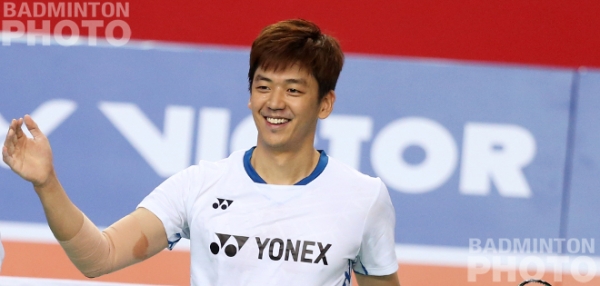
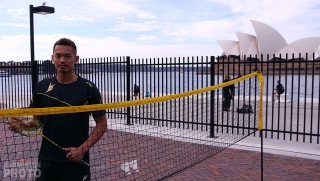
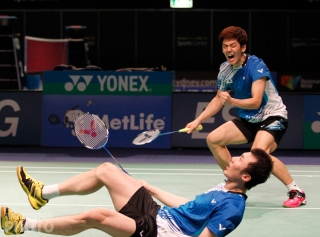
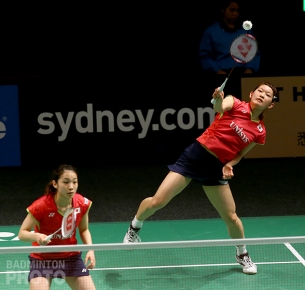
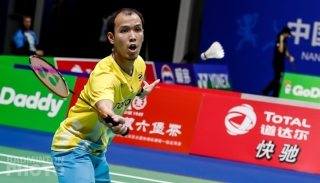
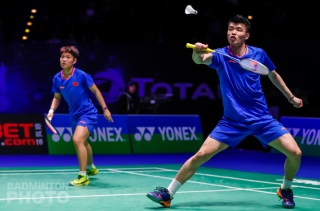
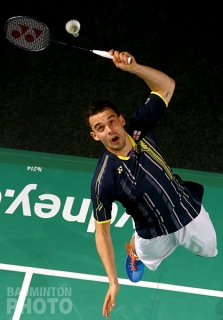
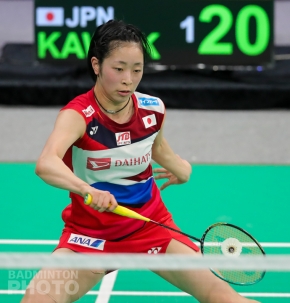
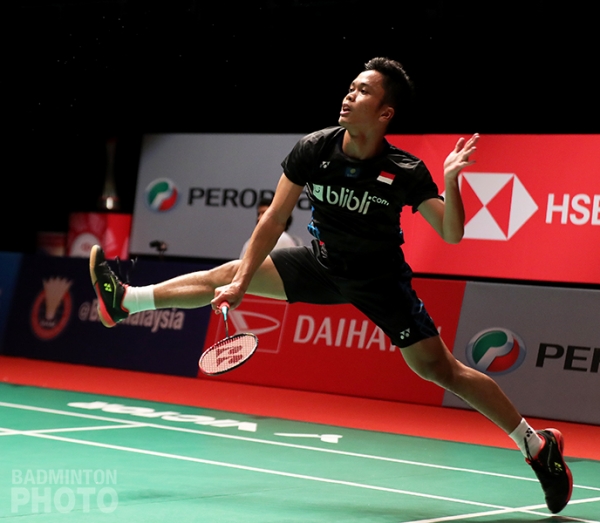
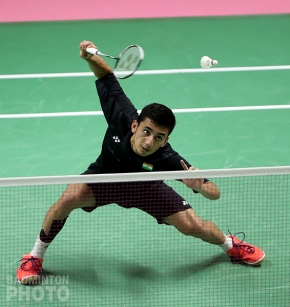
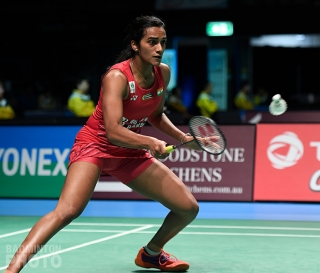
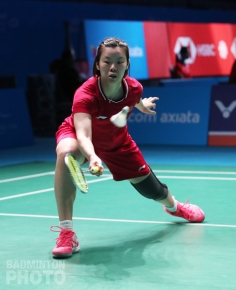
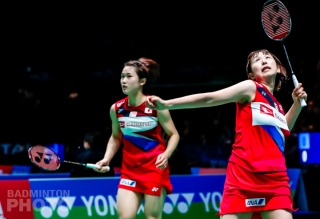
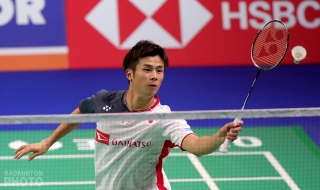

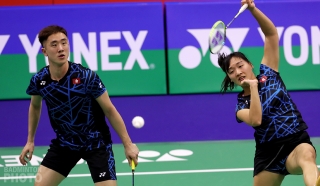
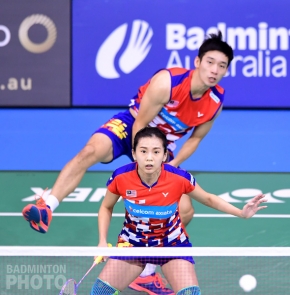
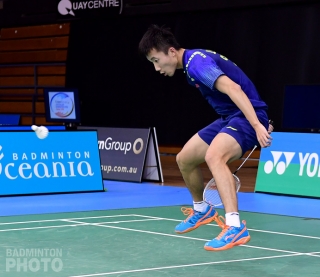

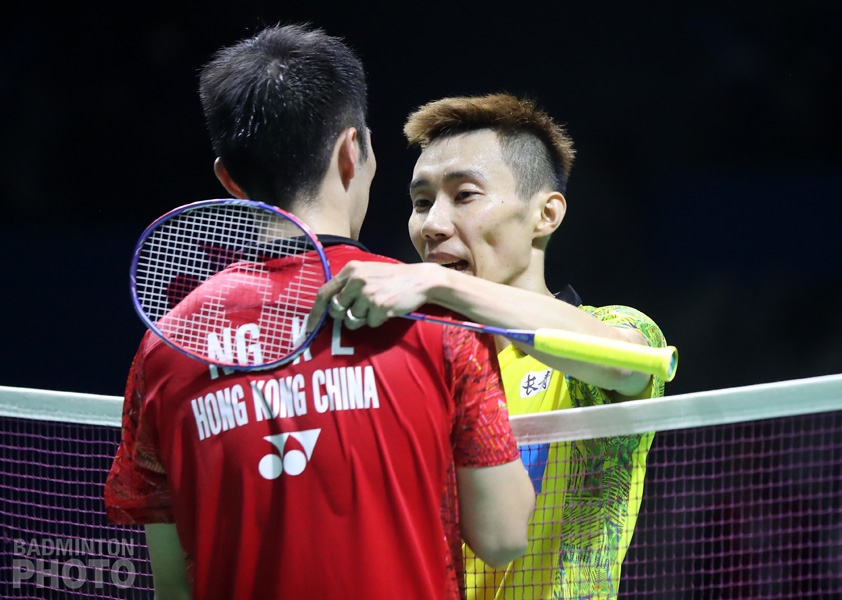
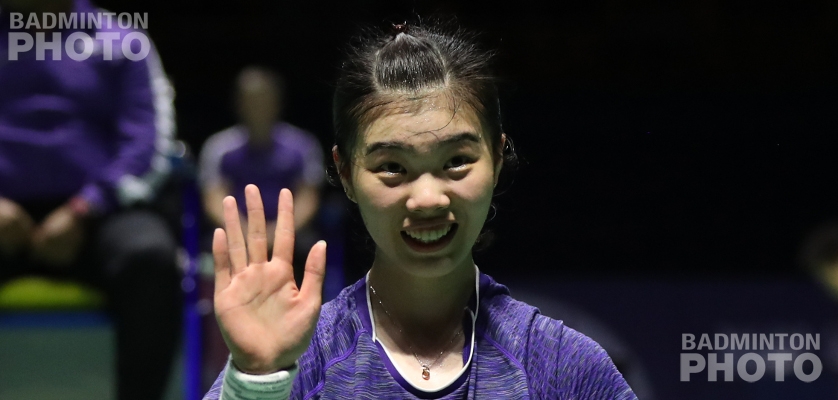
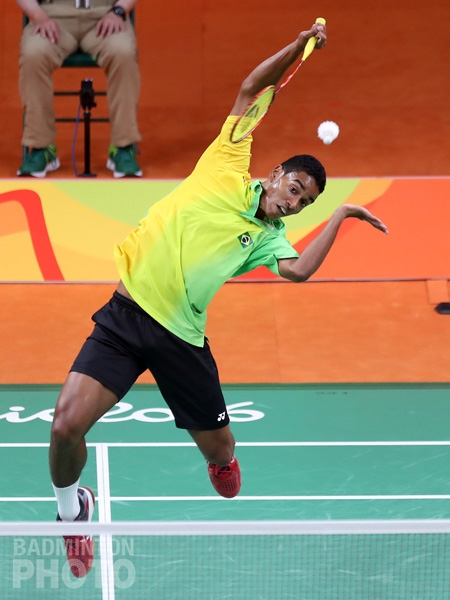
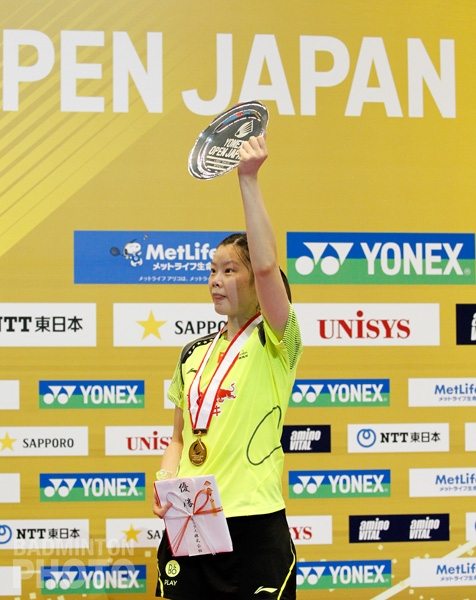
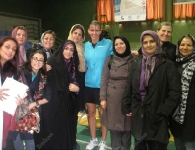
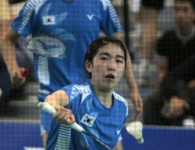
Leave a Reply